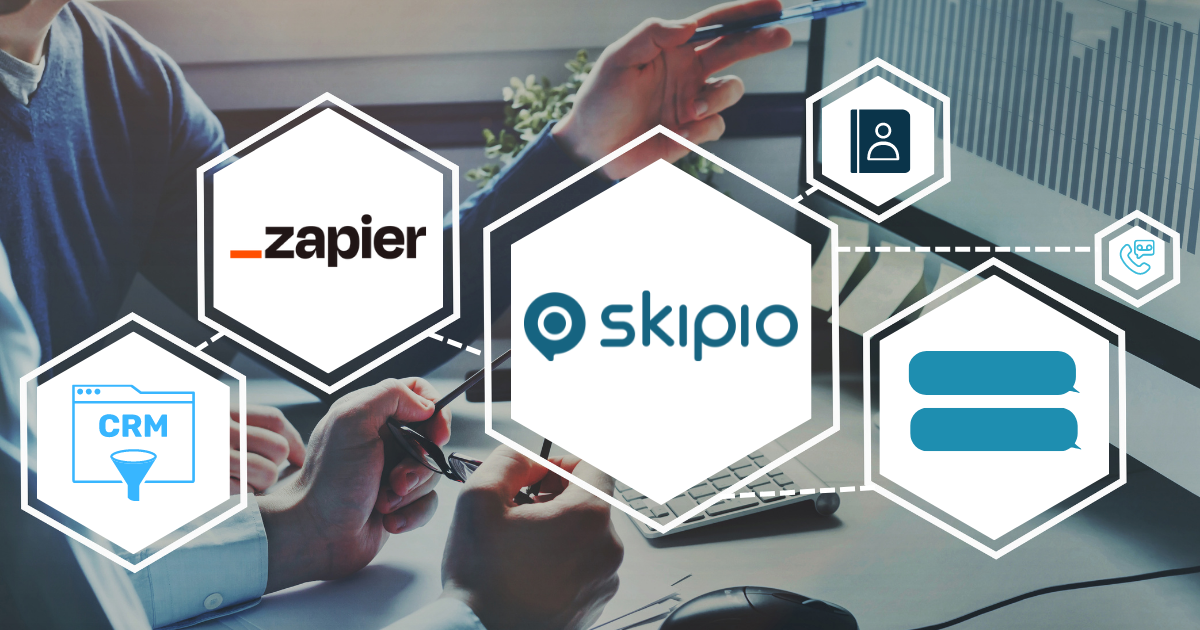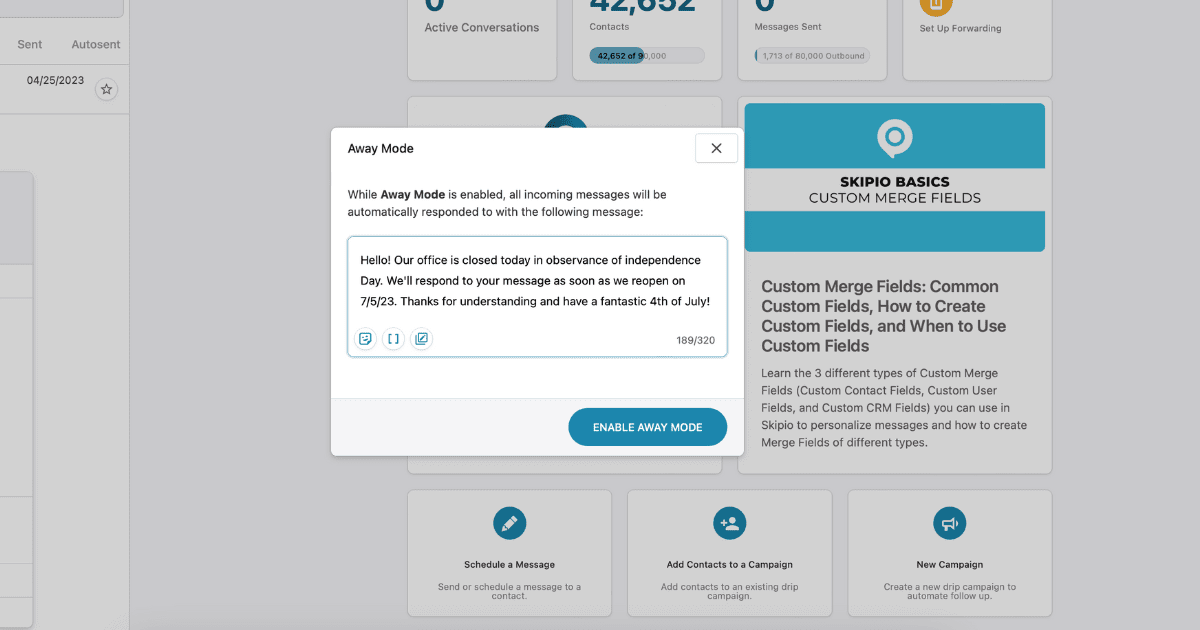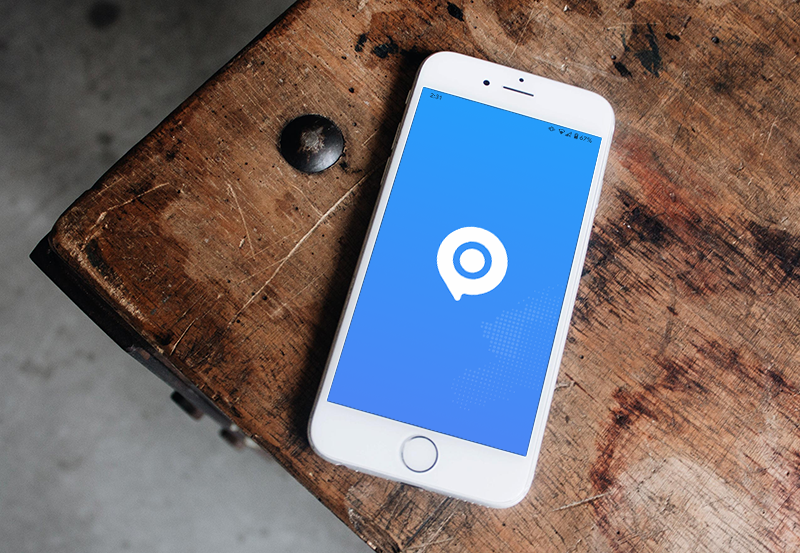
Skipio isn’t just ~text messaging. That might be the foundation of the platform, but what really matters is what sending those messages allows you to do.
By integrating Skipio with the apps you already use and love, you potentially save hours every month and solve the business problems that keep you from growing revenue. And you do it by talking to your leads and customers more consistently and utilizing the info you’re probably already gathering.
Here are 6 problems common business problems (maybe you’re dealing with one or more of them) and 14 different ways using the Skipio and Zapier integration you can solve those problems.
You take too long to contact leads and don’t consistently follow up, losing out on opportunities
You want to better manage your lead flow to increase conversions? Start automating your initial outreach and follow-up and get them into the right flows or sequences. By following up faster and more consistently, those leads are more likely to convert. At the very least you practically guarantee they see your text messages. That’s worth something.
When you run Facebook lead ads, add those new leads as contacts in Skipio and start them in drip messaging campaigns related to the ad they came in on.
For those with landing pages and forms created through ClickFunnels, HubSpot, or another CRM, get all the info from the formfills loaded into Skipio and send follow-up messages related to their answers.
When new contacts are put into Skipio, make sure those same contacts are added to the correct Mailchimp audiences and updated as subscribers so you coordinate your email outreach with your text message outreach.
Prospects and customers keep ghosting or no-showing for scheduled meetings
Reduce ghosting and improve show rates to meetings and appointments by sending better reminder messages. There’s no manual work required to do your follow-up before and after meetings with Skipio and Zapier linked to your calendars.
When someone picks a time on your calendar through Acuity, HubSpot, Calendly, etc., get their contact information into Skipio and set them up in a reminder messaging campaign that will prep them for the meeting, make sure they show up, and feel taken care of after it ends. These reminders can even include the delivery of Ringless Voicemail drops — prerecorded voice messages delivered straight to someone’s inbox.
If someone cancels or no-shows to an appointment, any update to the related status or field in your CRM can then trigger drip messaging to get that meeting rescheduled so leads or customers don’t go cold.
Customer onboarding feels lackluster or impersonal
Once someone buys, you need to keep proving the value of what they bought. Provide a personalized onboarding experience for new customers to increase adoption and ensure they stick around. If people don’t know “next steps” after buying, it won’t take long for them to go find another solution.
Keep careful track of new customers by triggering actions in monday.com. So, when new customers become contacts in Skipio, new columns, items, etc. can be created in different boards, all of which coincide with messages you set to send through the platform or other tools.
When a contact/record is newly created or updated in HubSpot, Salesforce, or another CRM, those contacts get created in Skipio as well, triggering the start of onboarding drip messaging campaigns. Different contacts can and should be enrolled in separate campaigns depending on their purchase history or other customer activity.
Customer churn is too high or cancellations consistently happen at the same time
Improving the onboarding experience helps with increasing adoption and reducing churn. And if you’re aware that people consistently stop using your product or cancel at a certain point, you can use Skipio to send reminders to help prevent those cancellations.
Anytime a new customer is added in Stripe, create that contact in Skipio and add them to a specific onboarding group related to their purchase so that you can follow up with specific insights or advice.
Based on customer activity or milestones set up in your CRM, trigger Skipio to send follow-up messages that guide customers to further solve a problem.
When a customer’s payment info is about to expire, set up a trigger that will add that customer to a Skipio group and send reminders about updating the credit card on file. (This type of churn can often easily be avoided by your proactive efforts.)
Messages fall flat and aren’t getting engagement or action
Use the info you already collect about customers to send more tailored marketing and sales messages. It shouldn’t feel like a total guessing game to encourage your leads or customers to take a certain action.
When you collect feedback or other information through Google Forms, SurveyMonkey responses, or TypeForm, create or update contacts in Skipio based on those responses. This may mean adding customers to certain groups to receive better targeted messages or enrolling leads into nurturing drip campaigns related to future purchases they wish to make.
Set up a trigger that will update contacts in Skipio based on purchases they’ve made. For instance, anyone who purchases Option C can be automatically added to a certain group and you then know you don’t need to send them future messages about buying Option C. That same change in your CRM can also trigger buyers of Option C to be added to a drip campaign promoting other relevant offerings, giving you an opportunity to cross-sell.
Contact information is lost between systems or requires manual upkeep
Keep contacts organized and up-to-date in multiple systems by making updates in a single system and having them apply to Skipio.
Create Skipio contacts from new Salesforce records, so there’s no need to manually upload the contacts into the system. Different statuses can then be uploaded to Skipio to trigger the start of relevant messaging.
When new contacts of a certain type are created or updated in Skipio, whether that’s based on a form, purchase, or something else, send Slack notifications to the relevant employees, such as notifying an account manager when they get assigned a new customer.
Integrate Skipio and Zapier to make your time and resources go further
You cut out manual tasks and administrative busywork by triggering messages to send based on the info that already lives in your CRM, calendar, and other apps. Thoughtfully building your sequences and workflows with Skipio gives you the best chance of getting in touch and staying connected.
Explore more ways to free up your time with the Skipio and Zapier integration.


